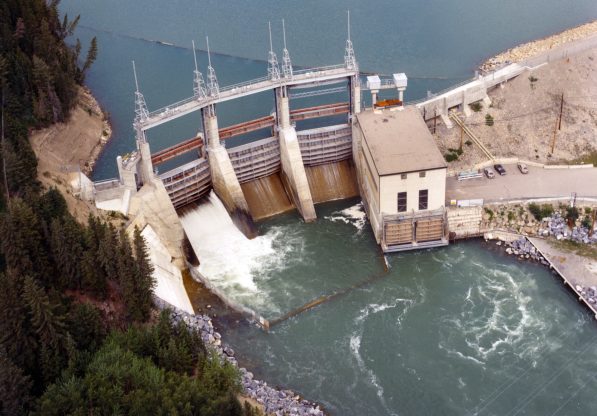
Bearspaw
The Bearspaw plant was built in 1954, primarily to reduce the possibility of winter flooding and ice packing on the Bow River through the City of Calgary. It was named after Chief Bear’s Paw, one of the chiefs who signed the treaty at Blackfoot Crossing in 1877.
Bearspaw was TransAlta’s last downstream development on the Bow River in Alberta. It is one of four TransAlta hydro plants on the Bow River Mainstream System, which is part of the Bow River Electric System.
The Bearspaw plant generates an average of 70,000 megawatt hours each year.
TransAlta’s hydroelectric plants primarily provide electricity during periods of peak electrical demand and ensure system stability. Their operating flexibility means they can start quickly to introduce hydro power within minutes, balancing out shortages due to unexpected outages, or providing power at times of high demand.
Environmental highlights
Protection of the environment is an important part of our hydro power business, as is responsible water use. We continually work with environmental and community groups to ensure habitats are protected, and that all users needs are heard.
Safety at the Bearspaw Reservoir
The Bearspaw dam and reservoir are a part of the Bow River Hydroelectric System. This system includes 11 hydroelectric generating facilities on the Bow and Kananaskis Rivers. Reservoirs on the Bow system are operated to hold water gathered from the mountains and then release it to generate electricity, to manage irrigation and to support flood control. The City of Calgary also sources its drinking water from the Bearspaw reservoir.
The Bearspaw Reservoir is the last reservoir on the Bow system. Bearspaw has less storage capacity than several other reservoirs upstream of it. Large volumes of water released from larger reservoirs upstream of Bearspaw often exceed the reservoir’s storage capacity. As water flows into Bearspaw, water levels can rise and fall by as much as two metres over a very short period of time. These sudden changes can surprise people on or near the reservoir, resulting in injury or even death.
To protect the public from fluctuating water levels, TransAlta uses a strip of land around the perimeter of the reservoir and running for approximately 8 km upstream as a safety buffer. TransAlta prohibits the public from crossing the land to access the reservoir, so that water levels can rise and fall safely.
Since emergency services are not available in the area, TransAlta strongly discourages recreational activities such as boating and swimming on Bearspaw reservoir. If an accident happens and someone needs help, Rocky View County does not have water rescue capacity, and the City of Calgary is not resourced to respond to incidents on the reservoir.
TransAlta is actively working with the City of Calgary and Rocky View County to address public safety concerns and develop a coordinated, long-term management plan for the Bearspaw reservoir.

